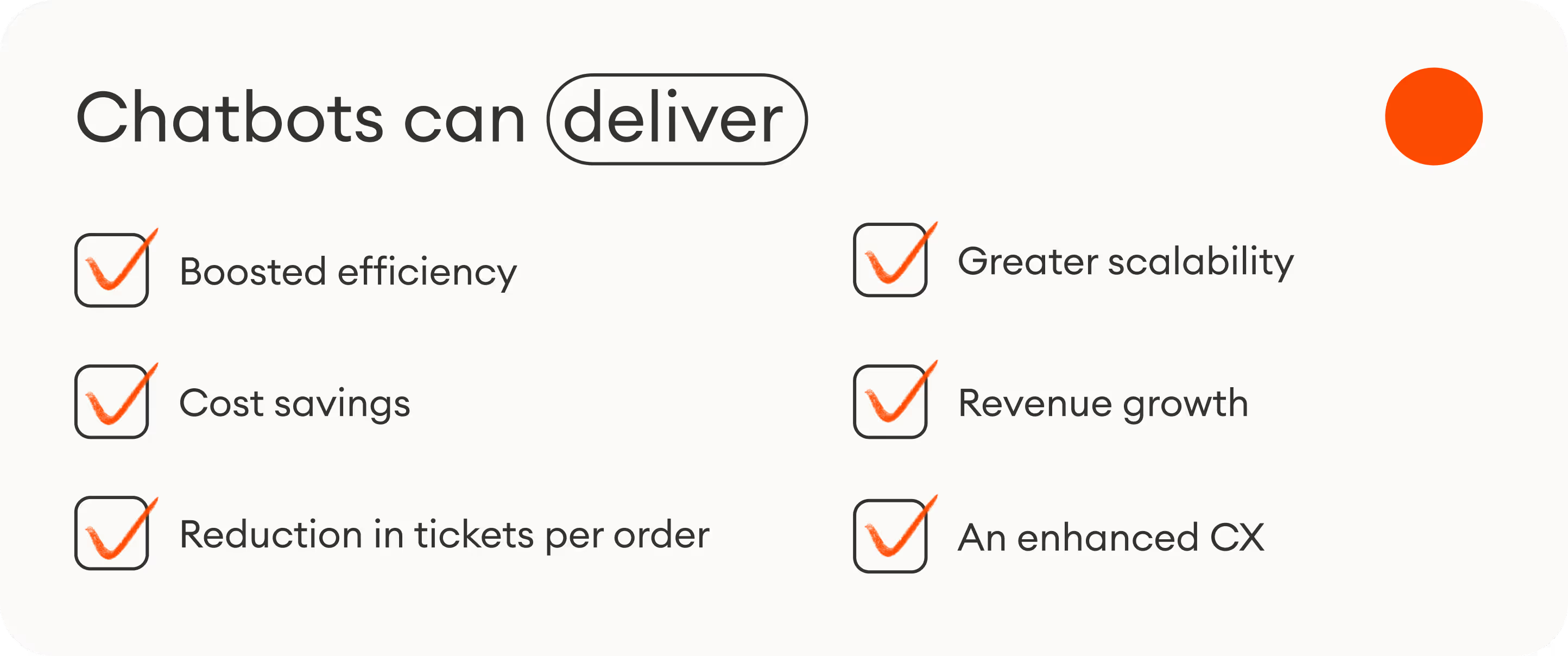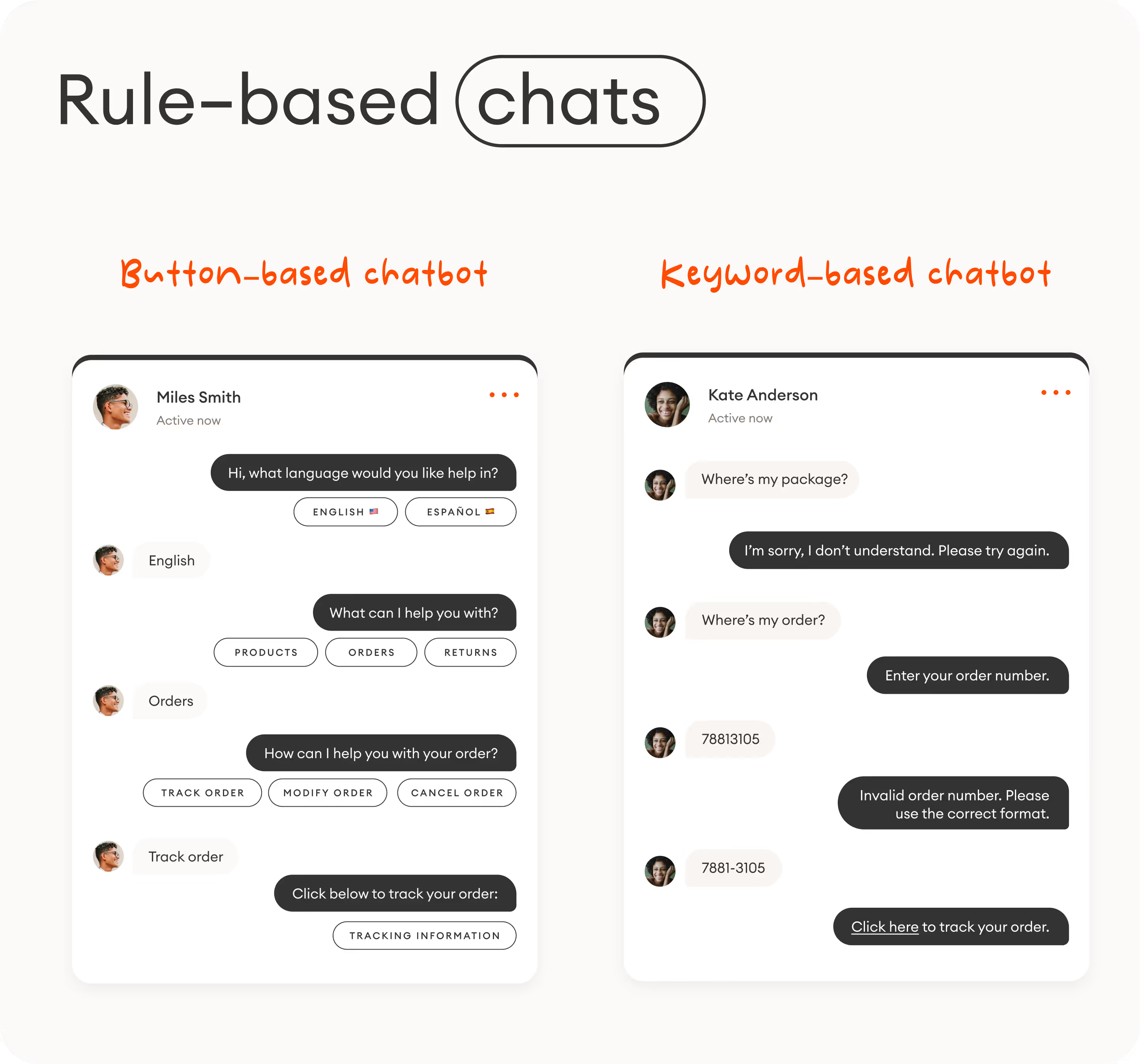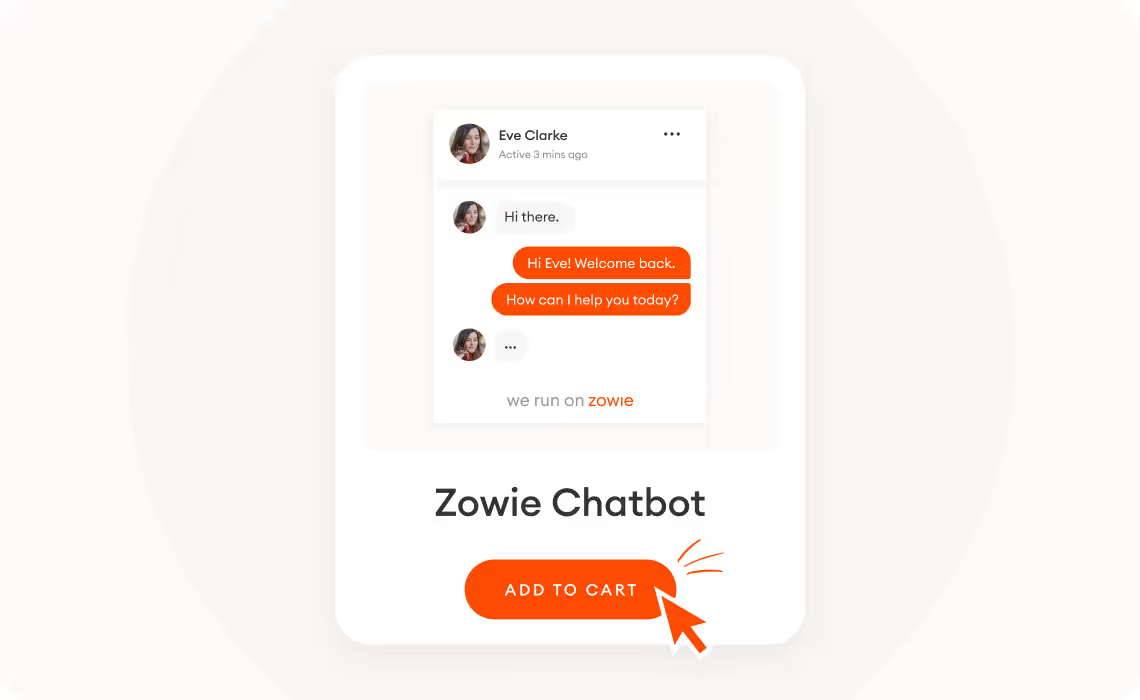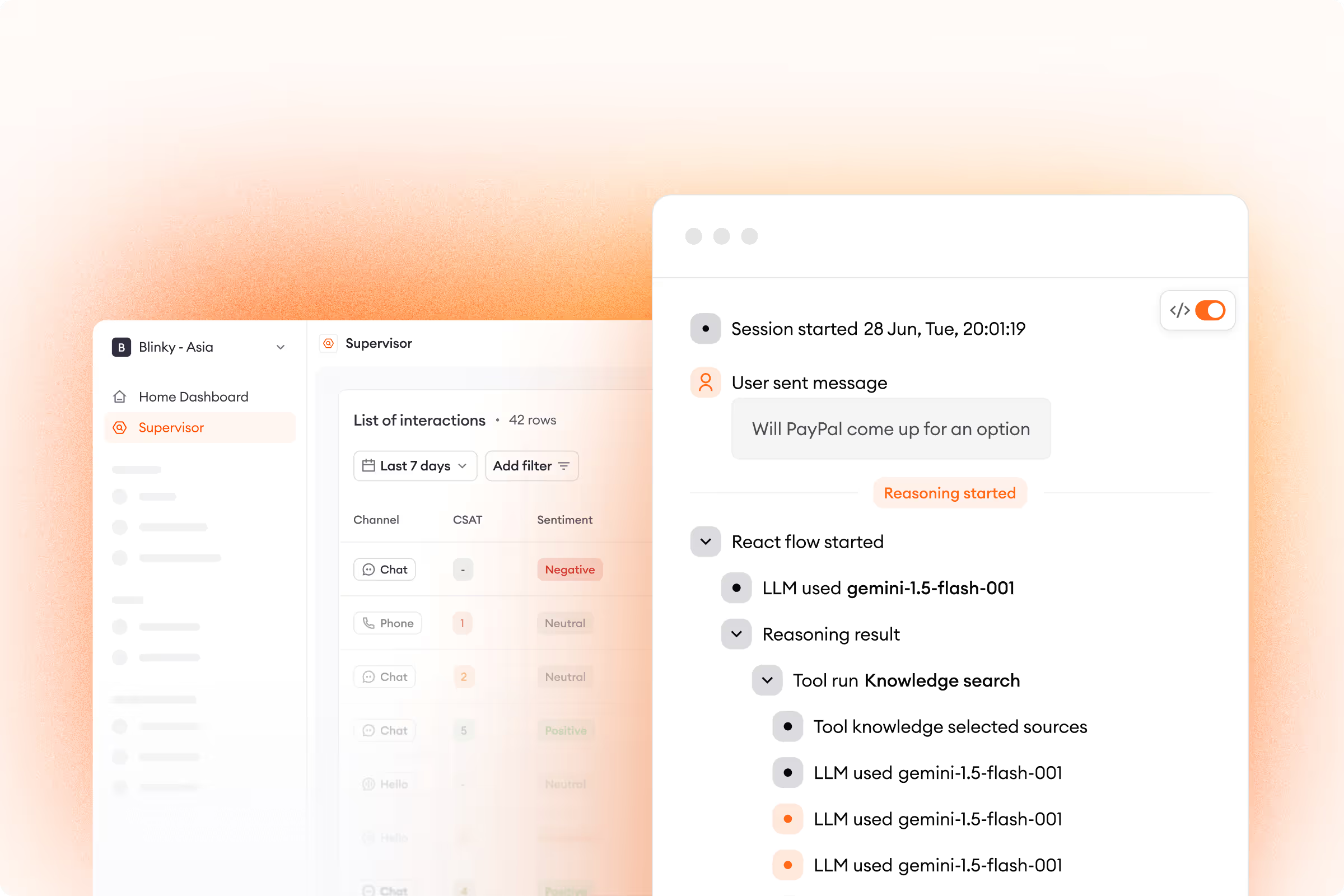So you’ve decided to buy a chatbot for your business. Right on.
But the next step is tripping you up — how do you actually buy a chatbot? With dozens of different pricing policies, subscription tiers, and features dotting the automation landscape, finding the right tool for your ecommerce business — at the right price — can feel overwhelming.
Relax — we’ve got you covered.
With a sound roadmap in place, purchasing the perfect customer support chatbot with confidence is well within reach.
5 steps to buying the right chatbot
1. Set your end goals
When choosing which kind of automation tool to go with, it’s essential to lay out what you’d like to accomplish and outline the experience you want customers to have. No two chatbots are alike, and similar automation solutions can yield varied results for different organizations based on their business needs.
Before buying a chatbot, prioritize what goals you’d like it to help you achieve. Unsure where to start? Here are some of the top use cases for ecommerce companies:
- Boosted efficiency: By fully automating most FAQs, chatbots free up agents to focus on more pressing tasks, improving customer support metrics across the board.
- Cost savings: Manually resolving customer queries one at a time over phone or email can be expensive. Meanwhile, tickets resolved by a virtual assistant cost a fraction of those handled by an agent. Even when chats get escalated to a human, a chatbot allows agents to respond to multiple tickets at a time.
- Reduction in tickets per order: 81% of customers want more self-service — chatbots give it to them. From answering questions about sizing or shipping to helping customers place the orders themselves, automation tools empower shoppers to get more done on their own.
- Greater scalability: Chatbots allow companies to scale their operations without needing to constantly hire new support agents. Expanding and taking on more tickets won't push your support team over the edge.
- Revenue growth: Chatbots can act as a new sales channel and help organizations drive sales through customer support by increasing conversion rates and AOV.

2. Decide which kind of chatbot you want
There are two main kinds of chatbots: rule-based chatbots and artificial intelligence (AI) chatbots. Knowing the capabilities of each is important. Otherwise, you’ll likely be disappointed down the road with a subpar user experience.
Rule-based chatbots rely on either pre-defined buttons or keywords to answer simple questions. To get assistance, customers can only click or tap the options a chatbot offers them or ask the exact questions that the bot was trained on.
Rule-based chatbots require more back-and-forth to resolve customer questions and typically deliver a worse customer experience than their AI counterparts.

AI chatbots use machine learning (ML) and natural language processing (NLP) to understand human language and simulate natural conversations. They’re able to recognize conversation patterns, interpret user input, and deliver human-like responses.
There’s a reason why every company is throwing around AI in their marketing right now. AI chatbots can achieve much more than rule-based chatbots: faster responses, more natural conversations, and more relevant information.
But beware — many AI solutions promise to bring businesses everything under the moon. Give the tools you’re considering a peek under the hood before purchasing to ensure they can back up their claims and actually perform. Top chatbot platforms can resolve up to 95% of customer questions.
AI acronyms got you turned around? Make sense of them all with Zowie’s AI Dictionary.
3. Settle the in-house vs. outsourced debate
When you decide that you want a chatbot, you’ll come to a fork in the road: do you build your own chatbot or go with a third-party solution?
While building a virtual assistant gives you greater independence, it’s the more expensive and complicated route. You’ll need considerable IT support to handle your initial coding and get your tool off the ground. And if something isn’t perfect, you’ll be racking up technical debt to fix it.
Next, you’ll have to manually train your bot, which requires not only adding the responses but determining which learning phrases to train it on. You’re also on the hook for whatever upkeep is required down the line. For many businesses, this kind of time commitment is impractical.
In contrast, a third-party platform provides a more user-friendly experience. Many of these tools are no-code, plug-and-play solutions that can instantly integrate with your existing tech stack with a no-fuss API.
While turn-key software is essential to an immediate ROI, many solutions will also work with you to identify custom features or capabilities that could be applied in the future. Better still, top platforms are self-learning and require limited maintenance, meaning they’ll keep getting better over time without requiring a major time commitment on your part.
4. Determine which features to include
The term AI chatbot can apply to a wide range of tools, so it’s important to zero in on which features are most important to you. Customer service automation software is capable of handling any of the following:
- Personalization: Chatbots don’t have to treat customers like another number. Built-in data tracking can recognize a customer’s name, location, and purchase history to generate tailor-made responses — including recommendations — with a human touch.
- Multilingual capabilities: As growing brands attract an international audience, they’ll want a chatbot that can speak to customers in their preferred language. Leading chatbots are capable of delivering 24/7 support in nearly every language.
- Intelligent handover: When some chatbots can’t give a customer the answer they’re looking for, they’ll blindly transfer tickets over to any available agent over the chat widget. Powerful AI tools, however, can analyze a customer’s data and intent to route chats to the reps who are most qualified to handle each individual case.
- Proactive chat: Why wait around for website visitors to reach out with a problem? Chatbots can be triggered to proactively offer help at critical moments along the customer journey, like when they appear stuck at checkout or are comparing similar items.
- Data-driven decisions: Chatbots can do much more than just answer customer queries. QA mechanisms let automation tools gather customer feedback and prepare real-time, actionable insights into how your products, website, or automations can be improved.
- Generative AI functionality: With ChatGPT catching everyone’s attention, generative AI is fast becoming standard for many chatbots. Today’s best chatbots can craft unique messages on their own with limited inputs from agents. Tell the tool what length, tone, and style you’re looking for, and conversational AI can create unique answers to customer prompts right on the spot.
5. Implement with ease
Now that you’ve dotted your i’s and crossed your t’s, your last step will be to have your chatbot go live on your website. To make set-up as efficient as possible, seek an out-of-the-box chatbot solution that can start delivering ROI in hours, not weeks.
Solutions with pre-built templates, streamlined workflows, and the ability to seamlessly upload and use your own knowledge base and existing resources will offer a more immediate ROI than their counterparts.
The most effective solutions will even have a dedicated specialist working with you to make sure your chatbot is optimized for you.
How much does a chatbot cost?
Chatbots can cost anywhere from pennies to an arm and a leg — and then some.
The key is finding a solution with a pricing policy that you’re comfortable with. While you may come across free versions with limited functionality, most platforms charge an initial licensing fee and then approach the chat feature with the following paid plans:
- A flat fee: You’ll pay an additional fee each to use their chat feature. Usually charged per seat, this amount stays the same each month, regardless of how high your support traffic is or how well the chatbot actually performs.
- Pay-per-interaction: You’re charged every time the chatbot interacts with a customer, even if the chatbot’s answer isn’t helpful and shoppers still need to be transferred to a live agent.
- Pay-per-deflection: You’re only charged when a chatbot fully resolves a customer ticket without any human interaction.
Are chatbots cost-effective?
In general, the pay-per-deflection model is fairest because businesses only pay if the chatbot is effectively doing its job. It shows that your automation provider is committed to your success and is a good indication that you’ve found a scalable service solution.
On top of these models, pay attention to hidden fees providers may throw at you. Many require pricey add-ons or a premium membership before you can really unlock meaningful automation or AI features.
Buying made easy
Now you’re equipped to navigate the world of chatbots and pinpoint the automation tool that’ll work best for you.
To make your job even easier, we recommend starting your search with Zowie, the only AI-powered chatbot software built for ecommerce brands that want to maximize their efficiency.

.avif)

.avif)
.svg)







